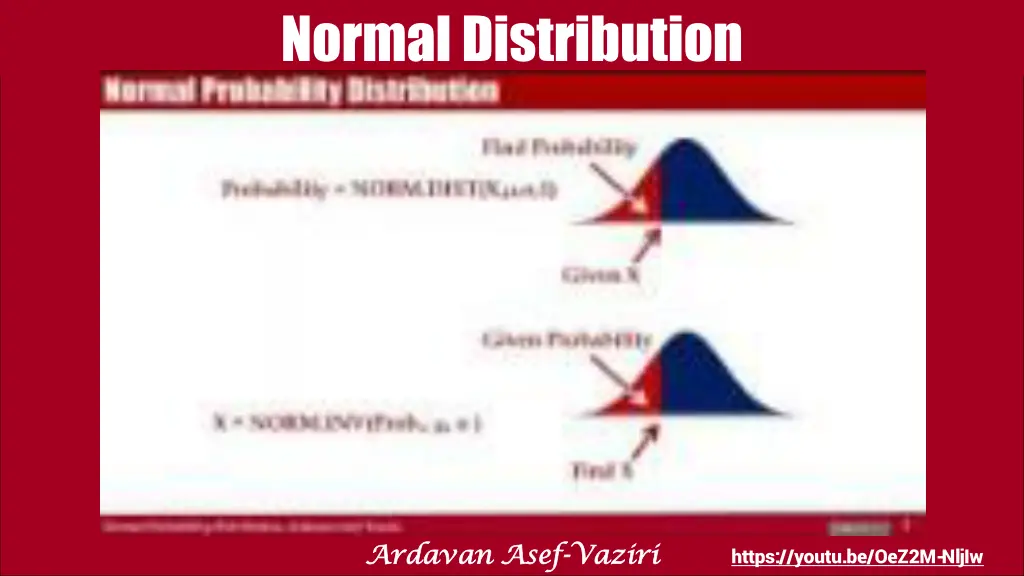
Understanding Normal Probability Distribution in Real-World Applications
Explore the concept of normal probability distribution and how it is applied in various real-world scenarios such as determining probabilities related to demand, costs, test scores, and more. Learn about the characteristics of normal distributions, calculating probabilities, and interpreting results with examples provided.
Download Presentation

Please find below an Image/Link to download the presentation.
The content on the website is provided AS IS for your information and personal use only. It may not be sold, licensed, or shared on other websites without obtaining consent from the author. If you encounter any issues during the download, it is possible that the publisher has removed the file from their server.
You are allowed to download the files provided on this website for personal or commercial use, subject to the condition that they are used lawfully. All files are the property of their respective owners.
The content on the website is provided AS IS for your information and personal use only. It may not be sold, licensed, or shared on other websites without obtaining consent from the author.
E N D
Presentation Transcript
Normal Distribution Ardavan Asef Ardavan Asef- -Vaziri Vaziri https://youtu.be/OeZ2M-NljIw
Normal Probability Distribution The Normal probability distribution is the most applied distribution in the real world. Weight of people, test scores, life of a light bulb, number of votes in an election, demand for a product, cost of a product follow Normal Distribution. Normal distribution is symmetric; the right side is the mirror image of the left side. Mean, median and mode, are equal to each others. Normal distributions is defined by its mean and its standard deviation . x~ N( ). The mean can be any numerical value: negative, zero, or positive. The standard deviation determines the width of the curve: larger values result in wider, flatter curves. Coefficient of Variations shows the relative value of with respect to CV= / 2 Normal Probability Distribution, Ardavan Asef-Vaziri.
Normal Probability Distribution Find Probability Probability = NORM.DIST(X, , ,1) Given X Given Probability X = NORM.INV(Prob., , ) Find X 3 Normal Probability Distribution, Ardavan Asef-Vaziri.
Normal Probability Distribution Demand for a product follows N~(1000,150). What is the probability that the demand is 900 or less? =NORM.DIST(X, , ,1) = NORM.DIST(900,1000,150,1) =0.25249 What is the probability that the demand is at least 1100? =1-NORM.DIST(X, , ,1) = 0.25249=1-NORM.DIST(1100,1000,150,1) 4 Normal Probability Distribution, Ardavan Asef-Vaziri.
Normal Probability Distribution Cost of a product follows N~(1000,150). What is the probability that the cost is between 1100 and 1300? =NORM.DIST(X, , ,1) = NORM.DIST(1300,1000,150,1)= 0.9772499 =NORM.DIST(X, , ,1) = NORM.DIST(1100,1000,150,1)= 0.7475075 0.22974 5 Normal Probability Distribution, Ardavan Asef-Vaziri.
Normal Probability Distribution Score of students in a test follows N~(800,120). What is the probability that a score is between 760 and 920? =NORM.DIST(X, , ,1)) =NORM.DIST(X, , ,1) = NORM.DIST(920,800,120,1) = NORM.DIST(760,800,120,1) = 0.8413447 = 0.3694413 0.4719 6 Normal Probability Distribution, Ardavan Asef-Vaziri.
Normal Probability Distribution Average weight of a red deer follows N~(500,75) lbs. What is the probability that a red deer weight is between 400 and 300 lbs.? = 0.0912112 =NORM.DIST(X, , ,1) = NORM.DIST(400,500,75,1) = NORM.DIST(300,500,75,1) =NORM.DIST(X, , ,1) = 0.0038304 0.08738 7 Normal Probability Distribution, Ardavan Asef-Vaziri.
Normal Probability Distribution Demand for a product follows N~(1000,150). The bottom 15% of the demand is less than what value? =NORM.INV(0.15,1000,150) = 844.535 How much inventory do we need to make sure the probability of the demand exceeding our inventory does not exceed 10%. =NORM.INV(1-0.1,1000,150) = 1192.23 8 Normal Probability Distribution, Ardavan Asef-Vaziri.
